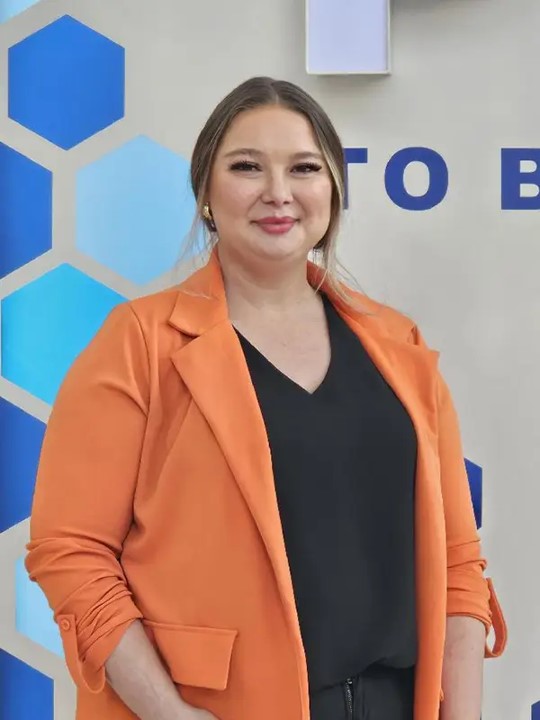Chemistry Researcher Studies Human Health at the Molecular Level

Courtney Christopher started college as a pre-med major but realized chemistry could hold answers to complex human health questions. Now as a postdoctoral research fellow in the Department of Chemistry, she’s uncovering novel links between a microbial derived metabolite, the gut microbiome, and conditions ranging from systemic inflammation to Alzheimer’s disease.
Most of her postdoctoral work at the University of Tennessee, Knoxville, has stemmed from her discovery of 2,3-dihydroxypropane-1-sulfonate (DHPS) in humans.
“Prior to my work, DHPS did not have a known role in human metabolism,” she explained. Her principal investigator is UT Chemistry Professor Shawn R. Campagna, who helped discover the role of DHPS in marine microbial communities a decade ago.
“My contributions have been identifying DHPS in humans, discovering that this metabolite does impact human physiology, and providing data and generating hypotheses that will lay the foundation for future studies to uncover how DHPS may be a key regulator of human health and inflammation,” Christopher said.
She’ll be discussing all of her DHPS discoveries and summarizing the findings on DHPS in human health at the University of Tennessee Health Science Center’s Neuroscience Institute seminar series this October in Memphis.
This past summer she delivered oral presentations at the American Society for Mass Spectrometry and the American Chemical Society conferences, and her collaborator presented at the American Society for Microbiology conference.
Vaping to Alzheimer’s
In one study, published in the journal metabolites, Christopher discovered a connection between DHPS and metabolic dysregulation, comparing DHPS levels in the stool of vaping and smoking subjects compared to controls.
“This work provided the first evidence that DHPS, a microbial metabolite with an unknown role in human physiology, may be linked to vaping and smoking-induced metabolic dyshomeostasis and a basis for future research investigating the role of DHPS in human health,” she said. “I also identified correlations to cholesterol metabolism, acetylated amino acids, neurotransmitters, and vitamin B metabolism, which may provide insight into the physiological role of DHPS.”
In another, she discovered a previously unrecognized link between DHPS and neurodegenerative diseases (NDDs) such as Alzheimer’s, Parkinson’s, and amyotrophic lateral sclerosis (ALS). “The data suggest that cryptic sulfur metabolism via DHPS is a missing link in our current understanding of NDD onset and progression,” Christopher said.
Her hypothesis is that metabolic dyshomeostasis and increased flux through DHPS result in mitochondrial dysfunction and systemic inflammation in humans.
This academic year she is investigating the pathophysiological impact of DHPS dyshomeostasis on mitochondrial dysfunction. “Additionally, I plan to study how different intrinsic (biological sex, aging) and extrinsic factors (diet, diabetes, hypertension) are impacted by DHPS dyshomeostasis,” she said.
Interdisciplinary Collaborations
Christopher was working on her bachelor’s degree in chemistry at Lincoln Memorial University when she first heard of the work in the Campagna Lab at UT using mass spectrometry-based metabolomics to investigate the etiology of Alzheimer’s disease.
“I was so impressed with Dr. Campagna’s research on human health and his many interdisciplinary research collaborations with PIs (principal investigators) across the country.” She earned her PhD from UT in 2022.
“None of this work would have been possible without my mentor (Campagna) and incredible collaborators,” Christopher said, “Through the Biological and Small Molecule Mass Spectrometry Core (BSMMSC) in UT’s Department of Chemistry, I have had the opportunity to collaborate with brilliant scientists across the globe. They have given me scientific freedom to explore this new discovery and have provided invaluable support.”
Her collaborators include Assistant Professor Katie Morgan from the UT College of Nursing, as well as researchers from Augusta University, the Medical University of South Carolina, and Louisiana State University.
By Amy Beth Miller